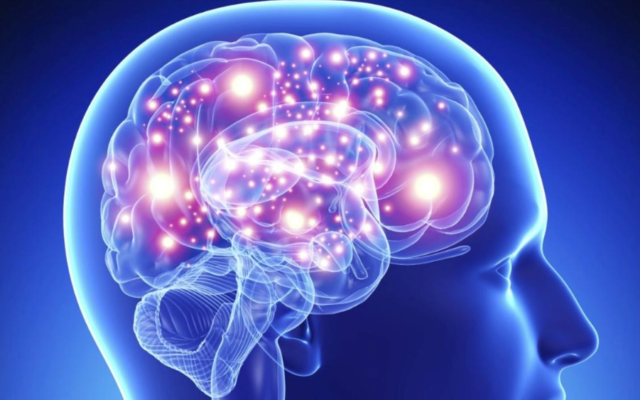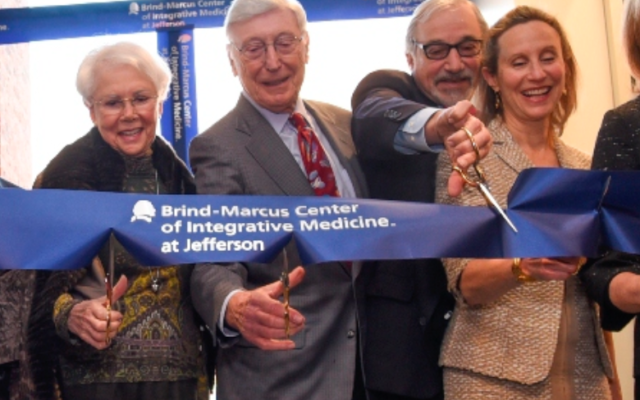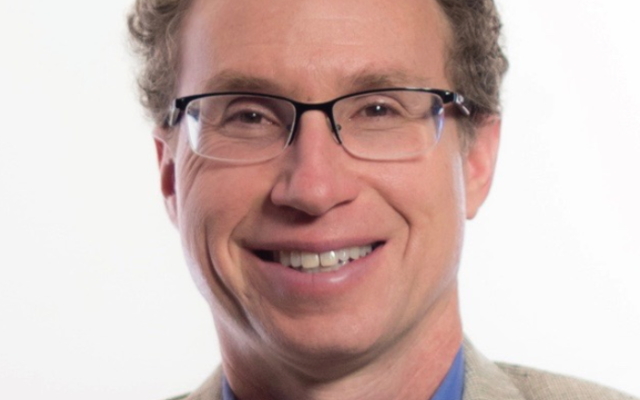Does Prayer Change Our Brain?
Researchers at the Marcus Institute of Integrative Health have pioneered the study of religious experience and its effect on the mind.

Although traditionally the holidays of Rosh Hashanah and Yom Kippur are seen as a time for spiritual and religious renewal, the process of prayer and reflection that accompany the holidays may bring other benefits as well.
At least, that is the belief of Andrew Newberg, a physician and medical researcher whose latest work, “The Varieties of Spiritual Experience,” was published this month by the Oxford University Press. He has pioneered research in what is called neurotheology that looks at the relationship between the mind and our spirit experiences.
Much of his research has been carried out at the Marcus Institute of Integrative Health at Thomas Jefferson University in Philadelphia. The institute was established in 2015 by Bernie Marcus with a grant from the Marcus Foundation in Atlanta. It is considered to be the largest center for clinical development of the practice of integrative medicine. The Philadelphia program is described in the book, “Tapestry of Health,” which features a forward by the Atlanta philanthropist and co-founder of The Home Depot.

In another book, “Brain Weavers,” also published with Marcus’s support, the founding director and CEO of the Marcus Institute, Daniel Monti, joined Newberg as its research director to describe the biological, psychological, social and spiritual conditions that lead to better brain health.
It’s a process that Newberg has found interesting during much of his life. He describes himself as having grown up in a liberal Jewish home where he said he “was really challenged by my parents to ask a lot of questions and then they would kind of throw them back to me,” including important Jewish questions.
That inquiry eventually led him into a career in medicine where almost 30 years ago he first began to explore the issues his parents raised when he was growing up. Questions, he said, about G-d’s existence and the influence that the belief in a divine presence has on our life.
These two dimensions of science and personal spiritual identity merged when, as a young physician he discovered that changes in the brain that could be studied using the powerful tools created by imaging technology. Newberg, who 10 years ago wrote a foundational text about what has been termed neurotheology, believes that the young scientific discipline offers a way to bring together our belief in an all-knowing, all-powerful deity and rational inquiry.

He believes that powerful new medical imaging tools that emerged from the growth of imaging technology can help picture the conditions in the brain that lead us to feel more connected to a higher power when we are praying or meditating.
Newberg said, “Being able to use brain imaging allowed us to really help to identify certain areas of the brain that were involved in these practices and experiences. It also provided new data. So, you know, suddenly we were looking at parts of the brain to see how they were interacting during these spiritual practices. Imaging technology helped to really create a more complex and a more cohesive kind of understanding about what’s going on in the brain during these experiences.”
In a series of best-selling books, Newberg has written about the changes that occur when a consistent, intense practice of prayer is begun. In a volume, “How G-d Changes Your Brain,” written in 2010 with psychologist Mark Waldman, Newberg wrote that “contemplation of G-d and other spiritual values appear to permanently change the structure of the brain that control our moods, give rise to our conscious notions of self, and shape sensory perceptions of the world.”
In 2018, psychiatrist David Halpern joined Newberg in writing “The Rabbi’s Brain: Mystics, Moderns and the Science of Jewish Thinking.” The work examines the knowledge gained from brain scan studies of hundreds of people who were observed in religious practice and how that may influence the way Judaism appears in our religious life.
As an observant Jew and a graduate of Yeshiva University with an intimate knowledge of Jewish practice, Halpern believes that neurotheology allows us to better understand the profound impact that holidays such as Yom Kippur have had on Jewish life. He thinks it helps us not only to have a better understanding of how we function as spiritual beings but how that process supports the social bonds that are strengthened at this time of year.
“The entire community gathers together almost as a witness to the relationship that they have,” Halpern observes. “And I think no matter what your background is, Yom Kippur is about seeing that relationship as a community of who we are as a people and where we’ve come from. Identifying within that group allows one to feel like it’s a day of self-reflection or personal introspection.”



comments